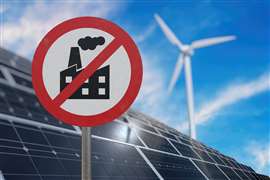FIEC: Is there a new push for circularity in Europe?
14 February 2024
It has been four years since the European Green Deal – the EU’s sustainable growth strategy - was launched by the current European Commission.
And while the EU legislator has consistently pursued its green agenda, it has never hidden the fact that the transition from an energy- and resource-intensive to a more sustainable and circular economy is a long road that requires unprecedented investment.
The EU is already set to spend a total of €578 billion – at least 30% of its budget – on climate action between 2021 and 2027.
But in a 2023 report on the key challenges of transforming Europe’s society and economy, the Commission estimated that additional investment of more than €620 billion a year will be needed to meet the goals of the Green Deal. “The vast majority of this will have to come from private finance,” the report says.
Since January 2024, the “EU taxonomy” defines detailed criteria for both sustainable and circular construction activities.
Launched in the summer of 2020, the EU taxonomy aims to mobilise investment for energy-efficient renovations, the construction of sustainable buildings and much more.
To this end, it defines six environmental objectives – climate change mitigation and adaptation, sustainable use and protection of water, transition to a circular economy, pollution prevention and control, and protection of biodiversity and ecosystems – and sets out detailed technical criteria that companies must meet to be considered “environmentally sustainable”.
A first regulation setting technical criteria for climate change mitigation and adaptation has been in force in all 27 Member States since 2022.
At the end of 2023, new technical criteria for the remaining four objectives, also known as the “Environmental Act”, came into force and have been applicable in the EU since January 1 this year.
 Since January 2024, the “EU taxonomy” defines detailed criteria for both sustainable and circular construction activities (Photo: AdobeStock AI)
Since January 2024, the “EU taxonomy” defines detailed criteria for both sustainable and circular construction activities (Photo: AdobeStock AI)
The law sets criteria for five construction-related economic activities under the “circular economy” objective, namely the construction of new buildings, the renovation of existing buildings, the demolition and wrecking of buildings and other structures, the maintenance of roads and motorways, and the use of concrete in civil engineering.
Europe’s construction industry is responsible for over 37% of the EU’s total waste generation by mass and for a significant proportion of greenhouse gas (GHG) emissions from material extraction, product manufacturing and construction processes. The recovery rate for construction and demolition (C&D) waste is currently around 90% in the EU, but much of this is backfilled.
Circular economy
A fully-fledged circular economy in the EU is still largely hampered by a lack of regulatory and financial incentives to drive demand for circular solutions. FIEC believes that the entry into force of the new sustainable financing criteria can be a crucial step towards more circularity and increase the demand for circular construction services in the medium term.
In the economic activity “construction of new buildings”, for example, the use of primary raw materials in the construction of the building must be minimised by the use of secondary raw materials.
The operator of the activity must ensure that the three heaviest categories of materials used in the construction of the building, measured by mass in kilograms, do not exceed certain maximum total quantities of primary raw materials.
For example, for the combined total of concrete, natural or agglomerated stone, a maximum of 70% of the material shall be derived from primary raw material; for the combined total of bricks, tiles, ceramics, a maximum of 70% of the material shall be derived from primary raw material; and so on.
Raw materials
FIEC members report that secondary raw materials are not always readily available in all Member States. Although the thresholds appear to be technically achievable in general, the availability of secondary raw materials can still vary considerably from one country to another and therefore depends on where companies are located.
At present, there is already a shortage of some secondary materials, which some of FIEC’s members must import from outside Europe.
‘Grey areas” must be removed from the framework to avoid misinterpretation.
 ‘Grey areas” must be removed from the framework to avoid misinterpretation (Photo: AdobeStock)
‘Grey areas” must be removed from the framework to avoid misinterpretation (Photo: AdobeStock)
Second example: Under the activity “Use of concrete in civil engineering projects”, the secondary raw materials must not be moved “over distances greater than 2,5 times the distance between the construction site and the nearest production facility for equivalent primary raw materials”, in order to avoid that the use of re-used or recycled materials leads to higher CO2 emissions than the use of primary raw materials.
Again, some FIEC members report that it is unclear whether it is feasible in all EU countries not to transport re-used or recycled materials over distances greater than 2.5 times the distance between the construction site and the nearest production facility for primary raw materials, eg in countries with a large surface area where production facilities are rare.
FIEC, which recognised the potential of the EU taxonomy early on, believes that these ‘grey areas’ need to be removed to avoid misinterpretation of the criteria. FIEC’s top priority is that the criteria are equally achievable in all 27 Member States and create a level playing field for construction companies to access private capital, which can then be channelled into sustainable and circular construction, helping the sector to contribute to the green transformation of the European economy.
STAY CONNECTED



Receive the information you need when you need it through our world-leading magazines, newsletters and daily briefings.
CONNECT WITH THE TEAM







